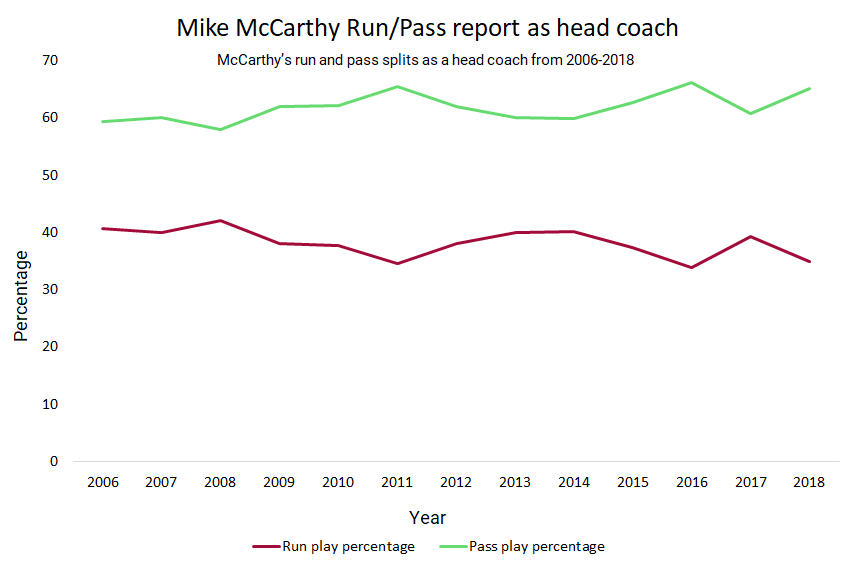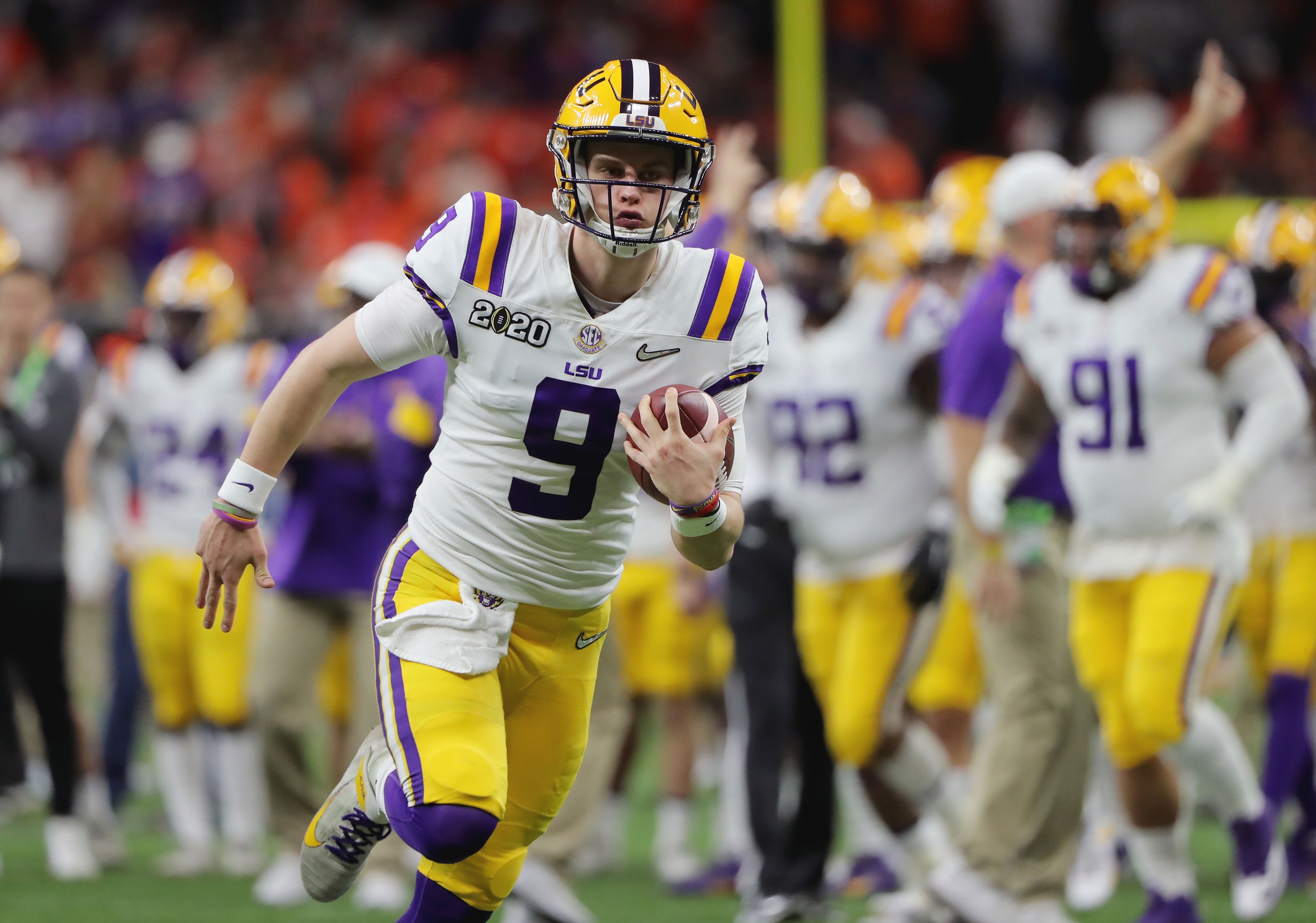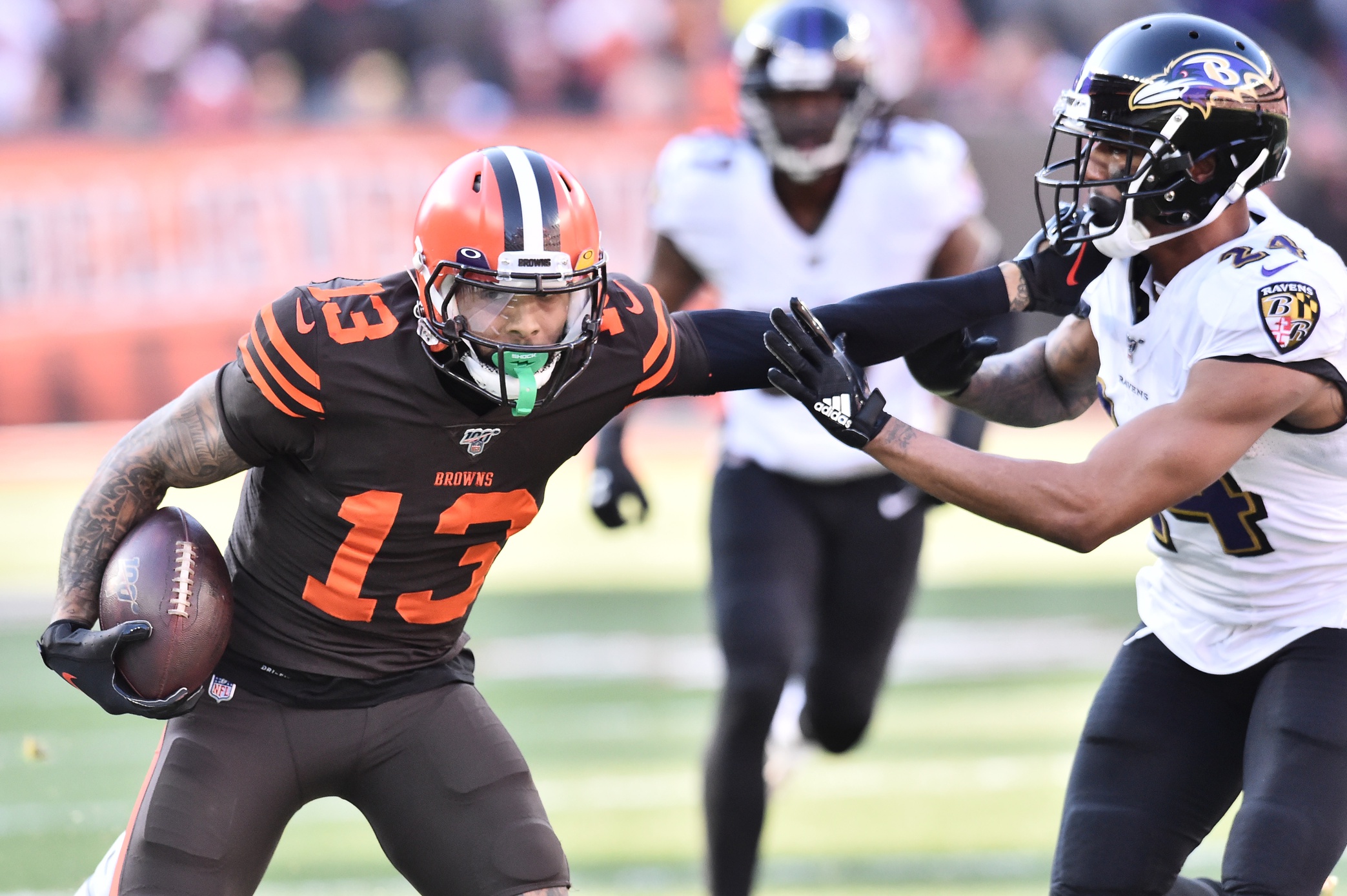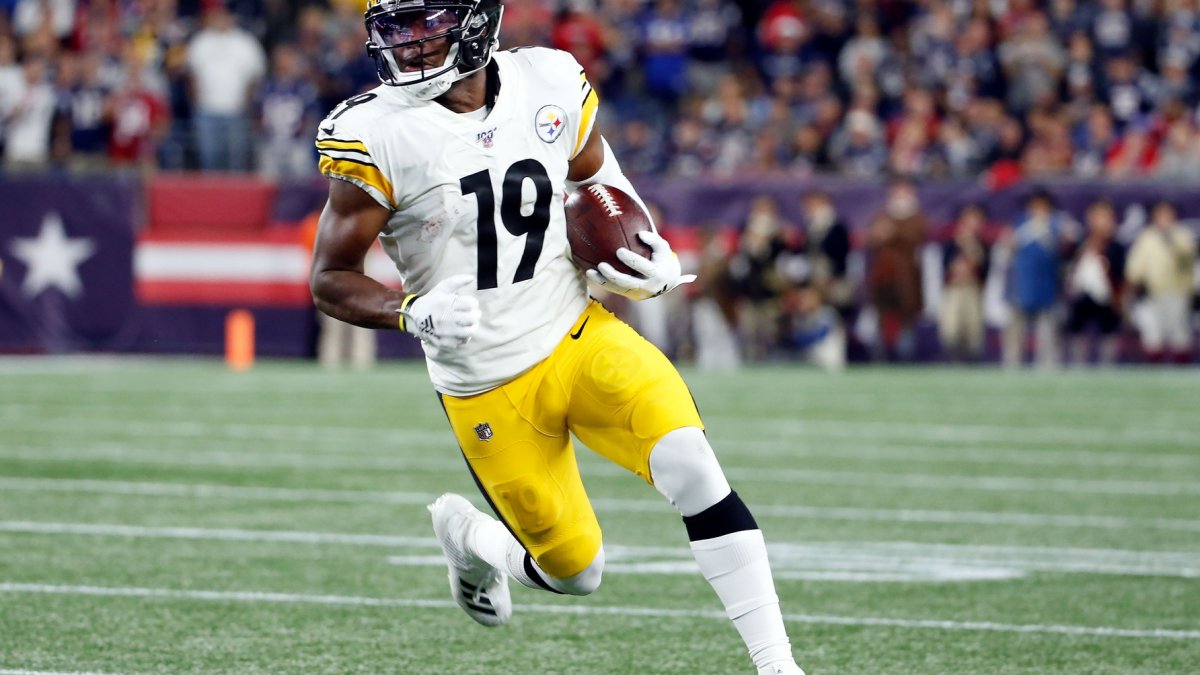Every fantasy football season is preceded by an offseason with questions surrounding potential usage rates, positional camp battles and whether a team can sustain fantasy relevance across a multitude of players within their offense. Examining how often teams line up in certain formations, which players they prefer to target and the projected workloads of said players will help us uncover the answers to these questions.
Listed below are six burning questions that need to be answered in the 2020 fantasy football season.
Subscribe to PFF's EDGE or ELITE subscriptions to get access to the following tools, charts, etc.
– All Premium Article Content
– Fantasy Football Rankings & Projections
– Fantasy Football Draft Guide, Cheat Sheets & Advanced Stats
– Fantasy Football Mock Draft Tool (DraftMaster)
– Fantasy Football Strength of Schedule Matrix
– NFL Player Grades
– NFL Premium Stats
1. What kind of offense will the Los Angeles Rams run?
The Rams fluctuated between both ends of the scheme spectrum in the 2020 season. During Weeks 1-10, the Rams lined up in 11 personnel 81% of the time (second) and lined up in 12 personnel only 10.9% of the time (29th). During Weeks 11-17, they lined up in 11 personnel 61.3% of the time (16th) and registered 35.6% of their snaps in 12 personnel, transitioning into more of a base 12 personnel offense.
Obviously, the change in personnel groupings had a direct impact on the differing usage of their offensive weapons. This chart displays the difference in targets per game among their pass-game weapons throughout those two time periods.
Los Angeles Rams Pass-Game Weapons Targets Per Game | 2019
| Player | Targets per game (Weeks 1-10) | Targets per game (Weeks 11-17) |
| Cooper Kupp | 9.8 | 6.3 |
| Robert Woods | 7.4 | 8.9 |
| Gerald Everett | 5.6 | 0.6 |
| Brandin Cooks | 4.6 | 3.7 |
| Tyler Higbee | 2.9 | 8.6 |
| Todd Gurley | 2.8 | 2.9 |
| Josh Reynolds | 2.3 | 2.6 |
Some of the discrepancies in the numbers above can be explained by way of injury (Gerald Everett and Brandin Cooks), but the philosophical change by head coach Sean McVay clearly shifted the workload and usage rates among his weapons.
Determining what kind of offense the Rams want to deploy in 2020 will be crucial to understanding which weapons you’ll want to own from the team. Wide receivers Cooper Kupp and Robert Woods appear to be incredibly safe choices — they both received a strong workload in either personnel grouping and have been highly productive in McVay’s offense on consistent snaps.
The biggest questions surrounding the personnel changes are the potential deployments of the tight end position (Tyler Higbee versus Gerald Everett) and the running back deployment (Cam Akers versus Darrell Henderson). It has widely been accepted that Higbee is most likely to feature within the offense moving forward and that Everett has somewhat fallen into an afterthought role — and PFF’s fantasy projections agree, ranking Higbee as the TE6 and Everett as the TE23. The running back battle will be another fun one to focus on, but it’s hard to not envision Akers seeing the majority of the backfield work, particularly because of his talent and the assets the Rams invested to acquire him (second-round pick).
PFF’s strength of schedule metric (SoS) is incredibly kind to the majority of the Rams’ offense — they rank in the top-10 easiest schedules at quarterback, running back and wide receiver, and rank 12th at the tight end position.
2. Can the Dallas Cowboys’ offense supply enough work for all of its weapons?
The Cowboys decided to move on from long-time head coach Jason Garrett in favor of Mike McCarthy this offseason. McCarthy — who had an incredibly long stint with the Green Bay Packers — is a former Super Bowl-winning head coach with the pedigree required to extract all of the Cowboys’ offensive potential.
Dak Prescott enters the season in another contract-year situation, and that proved to be a major positive in 2019 — Prescott ranked second in passing yards, fourth in passing touchdowns, fifth in yards per attempt and fourth in average depth of target (aDOT) among all quarterbacks with 100-plus attempts. Prescott’s campaign propelled him to rank second among quarterbacks in fantasy points and sixth in points per dropback.
Looking back at Aaron Rodgers’ statistics from 2008-2018 will help us paint a better picture of the potential workload Prescott may receive in 2020. Rodgers averaged 493.9 pass attempts per season over that timeframe, and that includes two injury-plagued campaign in 2013 (nine games) and 2017 (seven games). In addition, the NFL operated differently a decade ago than it does now, making it a safe projection to expect no dropoff in Prescott’s workload as a passer. The chart below displays the disparity between the run and pass play percentages from McCarthy’s time as a head coach in Green Bay.

The big question is whether the Cowboys have enough work for their weaponry, which includes star Amari Cooper (116 targets in 2019), budding star Michael Gallup (112 targets), Ezekiel Elliott (68 targets), first-round pick CeeDee Lamb and now starting tight end Blake Jarwin (43 targets). The departures of Randall Cobb (79 targets) and Jason Witten (82 targets) free up a lot of potential pass-game work for their replacements in Lamb and Jarwin — both players add explosive ability to the offense, with Lamb ranking third in yards after the catch per reception (11.1) and fifth in yards per route run (3.81) among all college receivers with 60-plus targets in 2019. Jarwin had high ranks in aDOT (7th) and yards per reception (11th) among all tight ends with 25-plus targets in 2019.
Lastly, don’t be surprised to see second-year player Tony Pollard receive more work. Pollard proved to be a tremendous player in his rookie season, as he ranked fourth in missed tackles forced per attempt and first in yards after contact per attempt among all running backs with 50-plus rushing attempts.
PFF’s fantasy projections expect another strong season from Prescott (ranked third) and Elliott (ranked fourth). There is more disparity in the receiver room, but all three of the top options rank inside the top-40 projected receivers for the season.
3. Can the Pittsburgh Steelers’ offense rebound in 2020?
The Steelers were once an offensive juggernaut, but the injury Ben Roethlisberger suffered last season ultimately sent their 2019 campaign into a downward spiral. The Steelers struggled to move the ball effectively on offense and ultimately lacked the ability to finish in the endzone. This chart displays the difference in their offensive output over the past five seasons.
Pittsburgh Steelers Offensive Touchdowns Scored | 2015-2019
| Year | Offensive scoring touchdowns (Rank) |
| 2015 | 77 (4th) |
| 2016 | 70 (9th) |
| 2017 | 76 (6th) |
| 2018 | 67 (14th) |
| 2019 | 54 (26th) |
Touchdowns are not the only way to judge a team’s fantasy success, but they’re a surefire way to accumulate cheap points. And if a team isn’t getting into the red zone or scoring very often, their players aren’t likely to produce a ton of fantasy points.
Roethlisberger ranked third in 2018, 10th in 2017 and 17th in 2016 among all quarterbacks in scoring, but the last figure is skewed due to only 14 appearances — he actually ranked ninth in points per dropback in the 2016 season.
Roethlisberger's absence last year had a massive effect on the entirety of the roster. This chart displays the weapons that played with Roethlisberger in 2018 and with the quarterback carousel in 2019, and the difference in their points per touch figures.
Pittsburgh Steelers Offensive Personnel Points Per Touch | 2018-2019
| Player | 2018 | 2019 |
| JuJu Smith-Schuster | 2.65 | 2.74 |
| James Conner | 1.04 | 0.98 |
| James Washington | 2.73 | 3.08 |
| Vance McDonald | 2.70 | 2.14 |
| Jaylen Samuels | 1.09 | 0.95 |
Only JuJu Smith-Schuster and James Washington improved their marks from 2018 to 2019, but there is an explanation — JuJu’s efficiency slightly improved due to his massive dip in volume (161 targets in 2018, 68 targets in 2019). His performance differed an insane amount when comparing the two seasons, as he was far more productive with Roethlisberger under center. Washington’s improvement may actually make some sense, given the chemistry between him and former college teammate Mason Rudolph, but some of the improvement was also likely due to his own development.
The Steelers were once a goldmine in fantasy football production, and much of that lands on the shoulders of Roethlisberger and his ability to remain healthy. There is potential for a massive rebound, as PFF’s SoS metric ranks the Steelers’ quarterback schedule and receiver schedule as the second-easiest in 2020.
4. What will the acquisition of Tom Brady do for the Tampa Bay Buccaneers and their skill position players?
The 2019 season proved to be a welcomed one for the Buccaneers’ passing offense, as Chris Godwin (ranked second), Mike Evans (16th) and Jameis Winston (third) all ranked highly among their positions in total fantasy points.
The big story of the offseason was the addition of Tom Brady, which obviously allowed the Buccaneers to move on from Winston. While Winston left a lot on the table in his development on the field, he proved to be one hell of a fantasy football option. His daringness to let passes rip without pause got him in trouble but also created many fantastic outcomes. Brady, meanwhile, has transformed into somewhat of the opposite at this stage in his career. His approach of methodically converting third downs, staying ahead of the chains and taking his shots when appropriate is second to none, but we have yet to see how his style will mesh with the Buccaneers’ personnel and philosophy.
Dating back to 2015, no running back had more targets, receptions, receiving yards, receiving touchdowns or first downs than New England’s James White. Dare Ogunbowale could seize that role for the Buccaneers in 2020, even though he doesn't possess the same pass-game potency as White. Ogunbowale ranked third in aDOT, 12th in receiving yards per reception and 15th in yards per route run among running backs with 40-plus targets in 2019. His usage will likely change going from Winston to Brady.
The most interesting part of the equation is the receiver and tight end rooms. The former is loaded with talent — much better talent than Brady had in New England in the past few seasons. In his past five seasons, Brady ranked third in PFF passing grade, 10th in passing yards and touchdowns, 19th in yards per attempt and 36th in aDOT among all quarterbacks when targeting only wide receivers (min. 300 attempts). It’s tough to say whether the lack of deep passing ability stems from Brady's age or Bill Belicheck preferring a more methodical approach. It is also conceivable that his pass-game personnel didn’t allow for him to target the deeper parts of the field more often.
Brady may not have ranked extremely highly when targeting his receivers over the past five seasons, but he was the gold standard when targeting tight ends over the same time span. He ranked second in passing yards, third in touchdowns, first in yards per attempt (by a wide margin) and first in aDOT among all quarterbacks with 300-plus attempts. These numbers — and past rapport — allow for a fairly safe projection for Rob Gronkowski. The wild card is the usage of O.J. Howard, but that remains to be seen.
PFF’s SoS metric is the highest on the Buccaneers’ wide receiver schedule, ranking it as the third-easiest in 2020. PFF’s fantasy projections expect the new Brady-led offense to be a successful experiment — Brady, Godwin and Evans all rank inside the top five of their respective positions, and Gronkowski comes in at the TE9 spot.
5. Can Joe Burrow’s presence elevate the entirety of the Cincinnati Bengals’ roster?
The Bengals struggled to produce as effectively as they might have hoped in 2019, but it led to the selection of No. 1 overall draft pick Joe Burrow. Burrow’s 2019 campaign at LSU will go down as one of the best performances ever by a college quarterback, and that will bring forth hope and high expectations in Cincinnati, as he is now the unquestioned starter and hopeful savior of the franchise.

Burrow targeted the slot alignment often last season; his 93.8 PFF passing grade ranked second, in addition to ranking second in passing yards, first in passing touchdowns, second in yards per attempt and first in adjusted completion percentage when targeting the slot (min. 100 attempts). All of these stats bode well for Tyler Boyd, as he ranked fifth in receptions, third in receiving yards, 13th in receiving yards per reception and yards after the catch per reception and 10th in yards per route run out of the slot (min. 25 targets).
A.J. Green is the biggest unknown on the roster, but that is strictly because of his health and not his ability. Green has put together finishes of WR42 (nine games played), WR10, WR33 (10 games played) and WR8 dating back to 2015. He’s struggled to stay healthy, and that’s the biggest issue for him at this point in time.
Former first-round pick John Ross showed some genuine flashes last season, as he ranked seventh in touchdowns of 40-plus yards, sixth in yards per reception and seventh in yards after the catch per reception. Ross’ ability to threaten defenses vertically and create yardage after the catch is rare, even if he has yet to justify the first-round selection spent to acquire his services.
Joe Mixon is perhaps the most intriguing piece to the puzzle. Last season, Mixon totaled 16 rushing attempts inside the opponents’ 4-yard line, a figure that ranked second in the NFL. The issue was that he scored only four touchdowns on those 16 attempts — that ranked 18th in the league. There is a lot of potential for positive touchdown regression for Mixon, in addition to a potential uptick in pass-game work. Burrow ranked sixth in passes attempted to players in a backfield alignment among all college quarterbacks. That said, Mixon’s workhorse role allowed him to finish as the RB13. His volume offers tremendous upside moving forward, and it's something that should be considered, especially if the efficiency improves as expected.
PFF’s fantasy projections expect strong seasons out of Burrow and Mixon, in addition to Green. Boyd ranks on the borderline of a WR2/3. The Bengals' quarterback, running back and tight end schedules all rank inside the top-12 of their respective positional groups, according to PFF’s SoS metric.
6. Will the Cleveland Browns live up to their offensive potential?
The Browns assembled what some believed to be a dream team during the 2019 offseason, but the season ultimately fell in line with most of the Browns’ performances over the past two decades: a missed playoff berth and with the firing of yet another head coach. The Browns recently hired former Minnesota Vikings offensive coordinator Kevin Stefanski as the new head coach, and they'll look for him to unlock all of their offensive potential.
Baker Mayfield is at the center of it all. He struggled to recreate the performance he had as a rookie, as he totaled 256.1 points (0.48 points per dropback) in 2018 and amassed 252.2 points (0.43 points per dropback) this past season. Mayfield’s 62 inaccurate passes in 2018 were comparable to his 69 inaccurate pass attempts in 2019, but the expectations were far greater this past season. Ultimately, the Browns will need Mayfield to take the next step in his development if they plan on reaching their full offensive potential.
The running back duo of Nick Chubb and Kareem Hunt is second to none in the NFL. Having two players of such great quality is a positive, but it could ultimately cap both of their ceilings, as the Browns would be wise to divide the workload among the two players. During Weeks 10-17 (when both Hunt and Chubb played), the pair ranked as the RB15 (Chubb) and RB17 (Hunt). The dropoff in points was noticeable, as Chubb ranked sixth in running back scoring when Hunt was sidelined (Weeks 1-9).
The saving grace for Chubb and Hunt is their complementary skill sets. While they shared the field, Hunt ranked sixth in targets among all running backs. Chubb ranked second in rushing attempts over the same timeframe. Both players can coexist, mostly because of their ability to supplement each other.
The lack of chemistry between Mayfield and Odell Beckham Jr. and Jarvis Landry was a major issue in 2019. Beckham ranked first in inaccurate targets due to quarterback play (27), and Landry ranked eighth with 20 inaccurate targets. The Browns left a lot of plays on the field due to a lack of chemistry, which is one major area to focus on entering the 2020 season. Even with all the issues, Landry totaled a WR12 finish and Beckham landed at the WR25 spot. These numbers help display this unit's vast potential if Beckham and Landry can truly get to the next level.

The addition of tight end Austin Hooper adds another dimension to the offense, but it likely projects a lack of market share for former starter David Njoku. Hooper’s 189.7 points ranked sixth among all tight ends in scoring, but expect that number to drop, as Hooper isn’t likely to see the same volume of work in Cleveland as he did in Atlanta.
PFF’s fantasy projections expect Chubb to far outproduce Hunt. The projections expect Beckham (WR13) and Landry (WR18) to produce strong seasons. The eighth-ranked receiver schedule — per PFF’s SoS metric — for the Browns will surely help that unit maintain high-level production.



 © 2024 PFF - all rights reserved.
© 2024 PFF - all rights reserved.